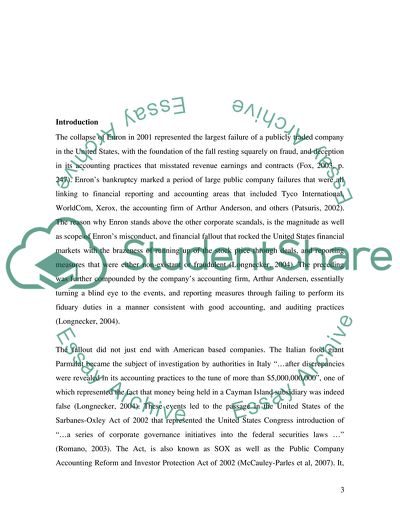Cite this document
(The Enron Scandal, and a Look at the Accounting Practices that Case Study, n.d.)
The Enron Scandal, and a Look at the Accounting Practices that Case Study. https://studentshare.org/finance-accounting/1717499-the-enron-scandal
The Enron Scandal, and a Look at the Accounting Practices that Case Study. https://studentshare.org/finance-accounting/1717499-the-enron-scandal
(The Enron Scandal, and a Look at the Accounting Practices That Case Study)
The Enron Scandal, and a Look at the Accounting Practices That Case Study. https://studentshare.org/finance-accounting/1717499-the-enron-scandal.
The Enron Scandal, and a Look at the Accounting Practices That Case Study. https://studentshare.org/finance-accounting/1717499-the-enron-scandal.
“The Enron Scandal, and a Look at the Accounting Practices That Case Study”. https://studentshare.org/finance-accounting/1717499-the-enron-scandal.


